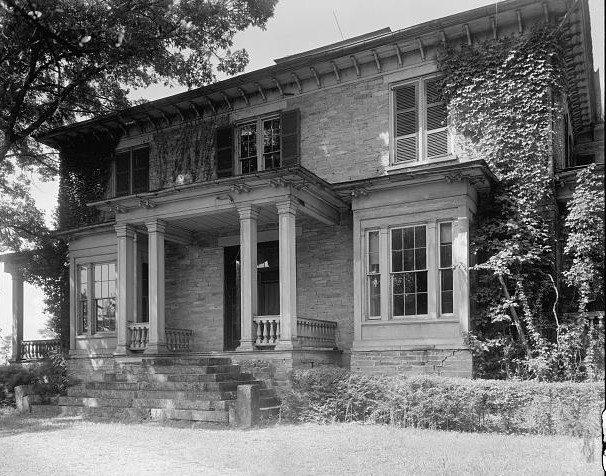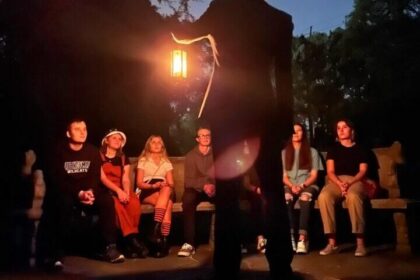The “White Horse of Death” is associated with Rugby Grange in Fletcher, and the Rugby Grange (built in 1860) ghost story appeared in a 1957 article in Life Magazine, but some things were changed to make it more appealing. Fletcher and Arden seem to be the spot if you’re looking for a headless horseman or even a mysterious death horse. The actual story states, “About dusk, one May evening, many years ago, in 1880, my father, grandmother and two of my aunts were sitting out on the front gallery of the Grange, watching for an uncle of mine, Phillip Otto Westfeldt, we called him Uncle Tuppy, who had earlier in the afternoon ridden into Asheville to get some medicine that was urgently needed for another uncle of mine, Hunt Reynolds, of Frankfort, Ky., who was in one of the downstairs bedrooms, very ill at the time. As I said, it was almost dark, but still there was light enough to see plainly.”

“All of the members of the family on the front porch saw distinctly a man on a white horse riding up the front driveway, which comes right by the front of the house and goes on around the house. … The horse and rider came on but did not pause at the front steps. Going right on around the gray stone house. Then my father, cutting across, ran to the back of the house, where he could see anyone coming around the circle from the front, but he saw no horse and no rider. He came back to the family, seated on the front gallery, and exclaimed, ‘Well, we all know who rides on a white horse.’
“The next morning at about 4 o’clock, my uncle Hunt died. My uncle Tuppy, who had gone into Asheville to obtain the drug so thoroughly needed, came riding in on his bay horse shortly after the man on the white horse had come by. He had been unable to find anywhere in Asheville the drug needed. The Grange is so situated that it is very easy for anyone to cut across the grass from the front gallery to the back of the house, where the road, which is a circle, comes around and no one could’ve come around the house without having been seen by my father, who had cut across. Also, there were servants in the kitchen and in the backyard at the time. No rider came around to the back, and no horse and rider could have left the driveway as there is a very steep hill leading to a large spring on east and a steep hill on the south and west. The man on the white horse disappeared from view, an apparition apparently.”
“This,” Dodette added, “is a true story.”
Tales like these would be forever lost, but we continue to research and preserve them.
Written By John G. Clark Jr.


